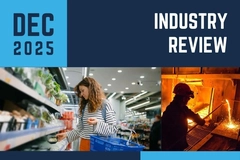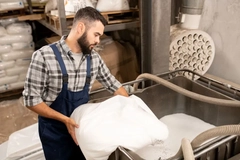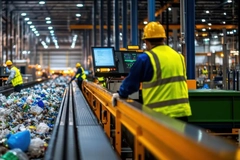Microplastics mix is more toxic to marine species than single polymers, study finds

A new study has revealed that a mixed blend of microplastics may be more harmful than a single polymer to marine copepods, a key food web species.
The study, published in Environmental Pollution by researchers at Plymouth Marine Laboratory, UK, aims to explore the impact of acute and chronic exposure to a blend of three types of microplastics on the copepod Acartia tonsa — an essential organism in marine ecosystems.
“The key finding of this study was identifying adult survival as a significantly sensitive endpoint. Given mortality is an uncommon endpoint in microplastic studies, it indicates that the tri-polymer blend is substantially more toxic than a single microplastic polymer exposure,” Dr. Zara Botterell, lead author of the study, tells Packaging Insights.
The experiment resulted in a 50% mortality rate when the copepod was exposed to a tri-polymer concentration of 0.182 mg per liter.
The study also provides data and methodological techniques for subsequent evaluations determining microplastics’ toxicity thresholds in marine environments.
Microplastic misconceptions
Microplastics are mistaken for small pieces of plastic, but they can only be seen through a microscope.The study highlights that environmental microplastics pose an “irreversible threat” to ecosystems, yet Botterell believes that the definition of microplastics is often misunderstood.
She says: “One of the biggest misconceptions is that microplastics are the tiny pieces of plastics you can see on the beaches. But microplastics can break down further into really tiny pieces that you can only see with a microscope, and these are often present in much higher concentrations.”
Microplastics can be manufactured to a microscopic size, but they mostly enter the environment after the breakdown of macroplastics — also known as secondary microplastics.
Secondary microplastics come from domestic, commercial, industrial, and agricultural materials, including single-use plastics, packaging, textiles, tires, and paints.
According to the study, understanding the toxicology of microplastics is difficult because they often have different physiochemical structures and associated matters, such as chemicals and microorganisms. The authors argue that future research must understand microplastics’ “multidimensional” properties.
In the experiment, a blend of three polymers was used: cryoground PE, nylon particles, and PP — often used in packaging products.
Managing marine environments
The experiment measured the impact of microplastics on the copepod Acartia tonsa, analyzing endpoints such as adult survival, algal ingestion rates, egg production and size, larval development ratio, and juvenile survival.
“Copepods are a group of small crustaceans found in freshwater and saltwater environments. The study indicates that their abundance and importance to marine ecosystems makes them a useful assessment tool for the toxicology of tri-polymer exposure,” says Botterell.
 Copepods are a key marine species found in freshwater and saltwater environments. Policy pressure
Copepods are a key marine species found in freshwater and saltwater environments. Policy pressure
The study found a 50% mortality rate when the copepods were exposed to a tri-polymer concentration of 0.182 mg per liter and a 100% mortality rate at concentrations between 0.4 and 0.6 mg per liter.
Moreover, mortality, egg size, and larval development ratio were the most sensitive endpoints after tri-polymer exposure.
Botterell adds: “The results from our study provide important data needed for risk assessments and understanding the thresholds at which toxicity and negative effects can occur. This information is essential in driving targeted interventions, including regulatory and legislative change like the [UN] Global Plastics Treaty.”
Recently, the EU Council and the European Parliament agreed on a regulation to tackle environmental pollution from plastic pellets, an industrial raw material used in plastic products.
“This isn’t about punishment but about encouraging better human behavior to prevent unnecessary harm. Around 95% of pellet losses, the EU’s third-largest source of microplastic pollution, can be avoided with better practices,” said Amy Youngman, legal and policy specialist at the Environmental Investigation Agency.










